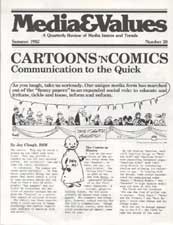You’ve Come a Long Way, Joanie!
|
This article originally appeared in Issue# 20
|
When "Doonesbury's" Joanie Caucus walked out on her husband and daughter last year, some saw her action as a dramatic coming-of-age for comic strip women.
The actions of Gamy Trudeau's liberated feminist, are important because she represents a link between "girl" and "woman" in the evolution of female cartoon characters, says Kathleen Turner, a mass media specialist at Notre Dame.
"Comic strips," she says, "encapsulate the important images of women at various times in our society's history."
For example, the first strip about a woman, "Polly and Her Pals," featured a "tall, attractive young lady with a mind of her own." She became a prototype. Even her "French doll" look, cast the mold for future generations of comic women: "high forehead, up tilted nose and enormous eyes that produced the illusion that these were just helpless babies to be rescued from the hard practical world."
Other stereotypes emerged later — the zany house-wife "Blondie," the nurturing grandmother "Mary Worth" and the career vs. marriage conflict "Brenda Starr."
The mold is being broken, however, by strips such as "Cathy" who has a feminist roommate, a chauvinist boyfriend and a traditional mother.
And Joanie? "To say that Joanie is a feminist is not to say her problems are solved," notes Turner.
"But that is what makes her appealing... What we see in Joanie that we haven't seen in girl strips is a woman's growth and development as she goes through all the issues women today must confront."



